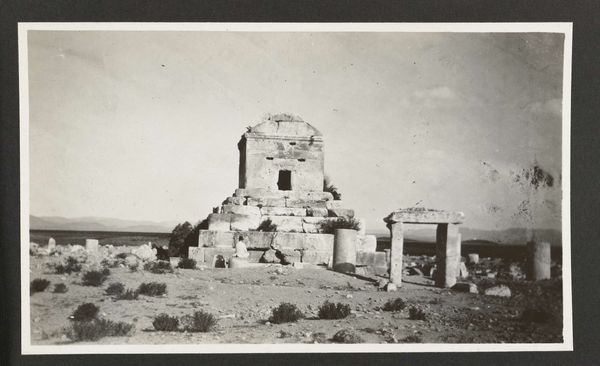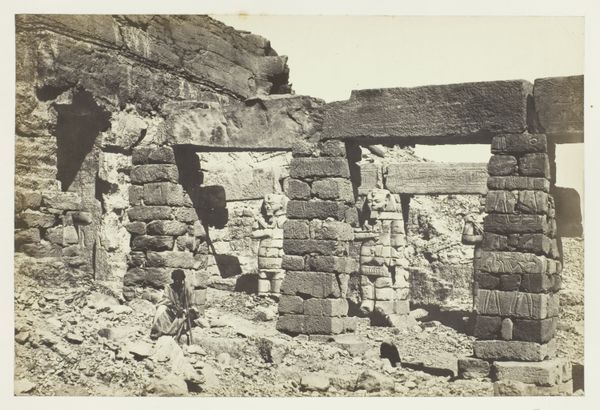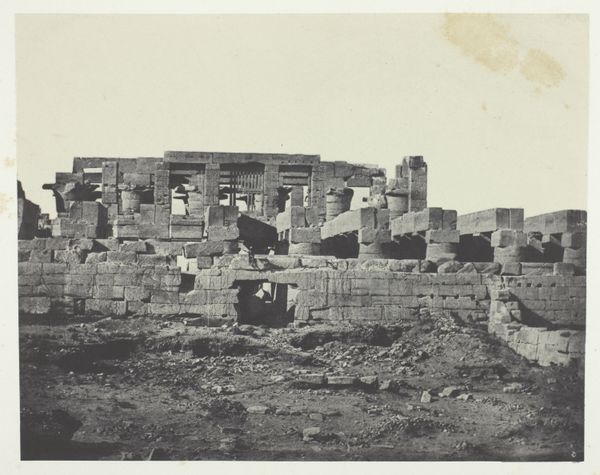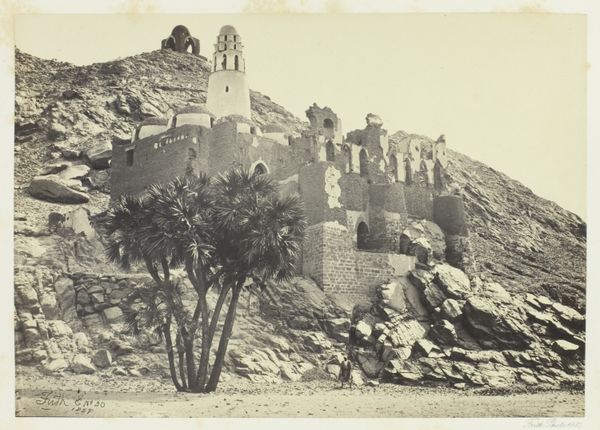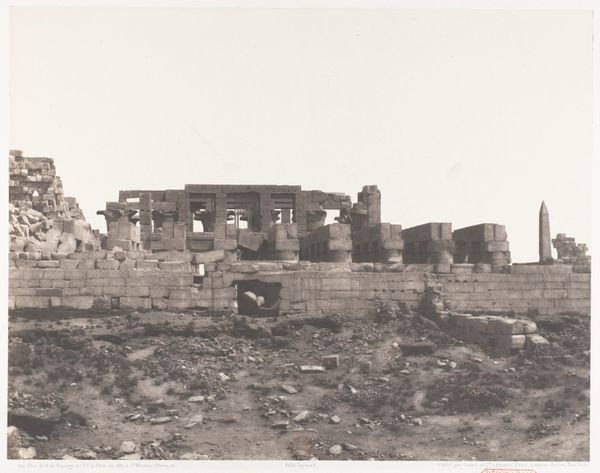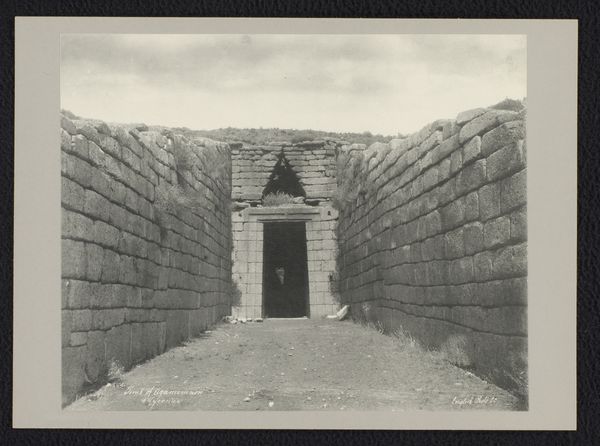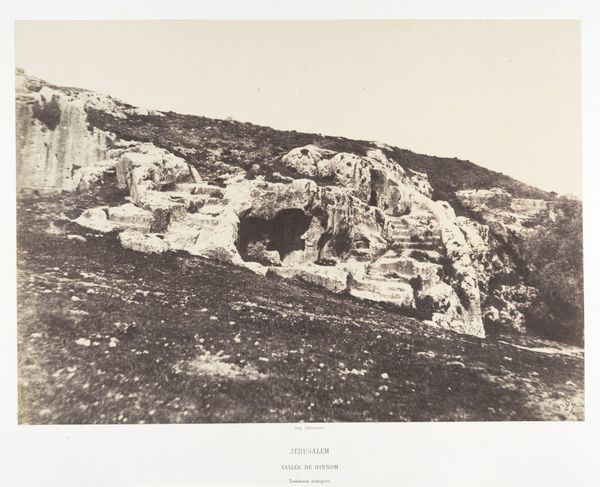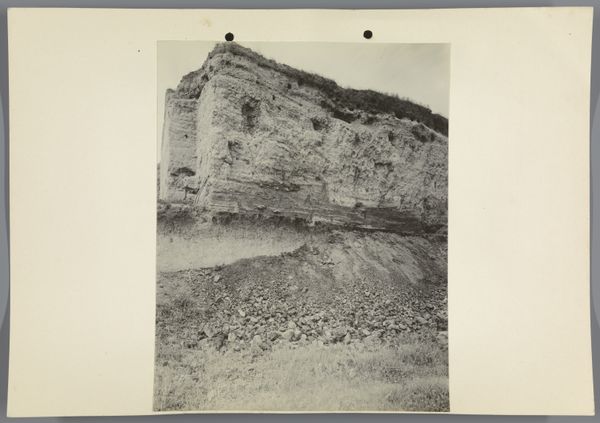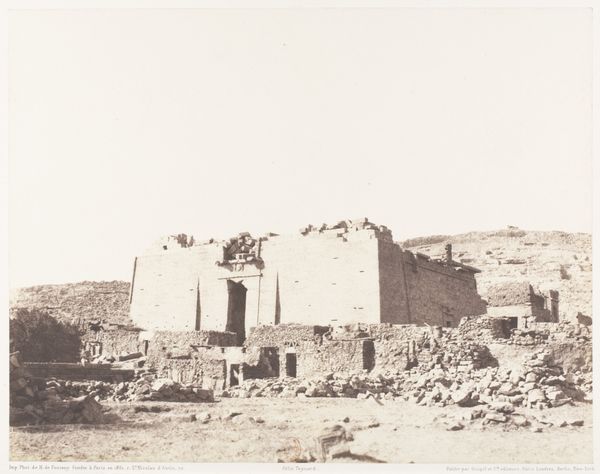
print, photography
#
portrait
# print
#
sculpture
#
landscape
#
photography
#
geometric
#
ancient-mediterranean
#
cityscape
Dimensions: height 84 mm, width 144 mm, height 124 mm, width 184 mm
Copyright: Rijks Museum: Open Domain
Curator: This monochrome print, possibly from 1925, captures the Tomb of Cyrus in Pasargadae, Persia, as photographed by A.G.A. van Eelde. The print's materiality, the textures rendered through photography, add a layer to the already monumental presence of the tomb. Editor: It strikes me as a somber, stark image. The geometric solidity of the tomb against that faded sky evokes a powerful sense of historical weight, a silent witness to millennia. There's something inherently melancholic about ancient ruins, isn't there? Curator: Indeed. This geometric, stepped structure rises from the landscape. Each layer, each block, feels imbued with significance, reminiscent of ziggurats but uniquely Persian. It evokes a memory, an echo of an empire built on principles of justice and innovation, quite poignant even now. Editor: Thinking about empires—and let's be real about what that entails, colonisation and so on—I wonder, what does it mean to photograph such a site? Is it reverence or another act of claiming this space? I see the tomb standing against the sky as if holding onto history as empires collapse. Curator: That tension, between reverence and claiming, is always present when dealing with sites of historical significance. Cyrus was seen, especially in his time, as a liberator, allowing deported peoples to return home. This image might act as a visual symbol that links an ancient ethos of tolerance to future political agendas. It also ties in ideas of masculine power associated with ruling empires. Editor: I think this perspective of a print of a historical object existing both as evidence of the past but being so subject to current ideas—and agendas—makes this image quite powerful. The simple form is actually far more complex than it appears on the surface. Curator: It is a multi-layered print: At once an ancient symbol of royal power, an architectural innovation, and, through photography, an icon capable of transcending its time, capable of whispering stories across millennia. The tomb is not merely a monument; it’s a narrative etched in stone. Editor: Absolutely, it serves as a constant reminder that history is never truly still. Thanks for sharing this thoughtful insight!
Comments
No comments
Be the first to comment and join the conversation on the ultimate creative platform.
